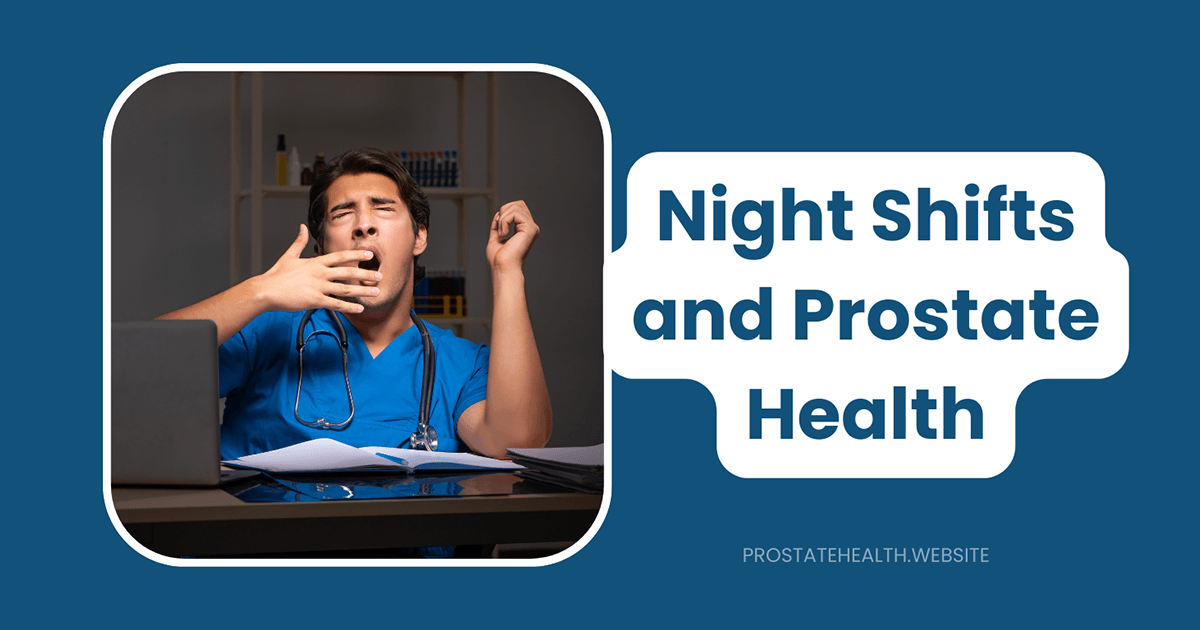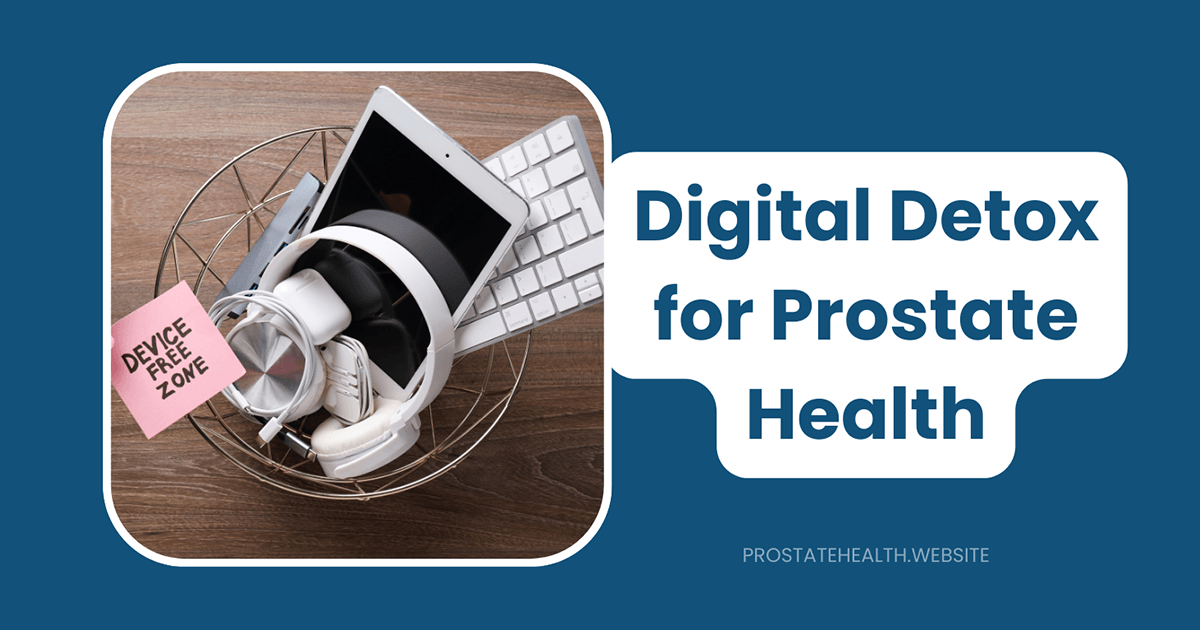Weight Training and Prostate Health: Finding the Right Balance

When James, a 58-year-old marketing executive, was diagnosed with an enlarged prostate, he had questions about his fitness routine. “I’ve been lifting weights for decades,” he told his urologist. “Should I stop? Could my training be making my prostate issues worse?”
His doctor’s answer surprised him: “Not only should you continue exercising, but the right kind of strength training might actually help your condition.”
The relationship between weight training and prostate health is nuanced and often misunderstood. For the millions of men dealing with prostate conditions—from benign prostatic hyperplasia (BPH) to prostate cancer—understanding how resistance exercise affects this vital gland can be crucial for maintaining both fitness and prostate health.
This comprehensive guide explores the science behind weight training and prostate health, offering evidence-based insights to help you find the optimal balance for your specific situation.
Understanding the Prostate: A Quick Primer
Before diving into how weight training affects the prostate, let’s understand this small but significant gland.
The prostate is a walnut-sized gland located below the bladder and surrounding the urethra. It produces fluid that nourishes and protects sperm, forming part of semen during ejaculation. As men age, the prostate commonly undergoes changes that can lead to various conditions:
- Benign Prostatic Hyperplasia (BPH): Non-cancerous enlargement of the prostate that can cause urinary symptoms
- Prostatitis: Inflammation of the prostate that may cause pain and urinary issues
- Prostate Cancer: The second most common cancer in men worldwide
These conditions affect millions of men, with BPH affecting approximately 50% of men by age 60 and up to 90% by age 85. Prostate cancer will affect roughly 1 in 8 men during their lifetime.
Given these statistics, understanding how lifestyle factors—including weight training—affect prostate health is essential for men’s overall wellbeing.
The Benefits: How Weight Training Can Support Prostate Health
Research increasingly suggests that regular resistance exercise offers several benefits for prostate health:
1. Improved Body Composition
Excess body fat, particularly abdominal fat, has been linked to worse outcomes in both BPH and prostate cancer. According to Desert Sky Urology, “Obesity and excess body fat have been shown to worsen BPH symptoms.”
Weight training helps:
- Increase lean muscle mass
- Boost metabolic rate
- Reduce body fat percentage
- Decrease inflammation associated with obesity
The Fred Hutchinson Cancer Center notes that “muscle burns 35 to 50 times more calories than fat, so increasing muscle mass can help with weight management,” which is beneficial for prostate health.
2. Hormonal Regulation
Weight training can help optimize hormonal balance, which is crucial for prostate health:
- Testosterone Management: While resistance training temporarily increases testosterone, regular training may help maintain healthy levels without extreme fluctuations
- Insulin Sensitivity: Weight training improves insulin sensitivity, reducing insulin resistance that can stimulate prostate cancer growth
- Growth Hormone Optimization: Proper resistance training helps maintain healthy growth hormone levels that support tissue repair without excessive cell proliferation
3. Reduced Inflammation
Chronic inflammation is increasingly recognized as a contributor to prostate conditions. Regular, moderate-intensity resistance training has been shown to reduce systemic inflammation markers, potentially benefiting prostate health.
4. Counteracting Treatment Side Effects
For men undergoing prostate cancer treatment, weight training offers significant benefits:
- Combating Muscle Loss: Hormone therapy (androgen deprivation therapy or ADT) often causes muscle wasting. Research from Maastricht University found that “patients who performed muscle-strengthening exercises twice a week for 20 weeks gained less fat mass and increased muscle mass compared to a control group.”
- Preserving Bone Density: ADT accelerates bone loss, increasing fracture risk. Weight-bearing exercise and resistance training help maintain bone mineral density.
- Improving Sexual Function: According to a 2025 study reported by ASCO Post, “Regular exercise can improve erectile dysfunction in men with prostate cancer,” with participants engaging in both aerobic and resistance training showing significant improvements.
5. Potential Cancer-Fighting Effects
Perhaps most remarkably, emerging research suggests exercise may directly fight prostate cancer:
- A study cited by ZERO Cancer found that “men who exercise the equivalent of one to three hours of walking each week have an 86% lower risk of aggressive prostate cancer.”
- The same source notes that “three or more hours of vigorous exercise can lower the risk of prostate cancer death by 61%.”
- Research indicates that exercise may alter the tumor microenvironment, potentially slowing cancer progression.
The Risks: When Weight Training Might Affect Prostate Health
Despite the benefits, certain aspects of weight training warrant caution for men with prostate concerns:
1. Heavy Lifting and Intra-Abdominal Pressure
Very heavy lifting, particularly with improper breathing techniques, can increase intra-abdominal pressure. For men with BPH or urinary symptoms, this pressure may temporarily worsen symptoms by:
- Putting additional pressure on the bladder
- Potentially exacerbating urinary urgency or frequency
- Increasing discomfort during exercise
2. Potential Hormonal Considerations
While research is mixed, some studies suggest that extremely intense resistance training might influence hormone levels in ways that could affect the prostate:
- Very high-intensity training may cause significant short-term testosterone spikes
- Overtraining can disrupt hormonal balance
- Some research suggests a complex relationship between testosterone levels and BPH
According to Harvard Health, “Some studies suggest that high levels of testosterone could be associated with an increased risk of benign prostatic hyperplasia (BPH),” though the relationship is complex and not fully understood.
3. Sitting and Sedentary Time
Interestingly, a study published in PMC found that “subjects with lower sedentary time (4.5-7.0 hours/day) had a significantly lower risk of BPH compared to those with higher sedentary time (>7 hours/day).” This suggests that the sedentary recovery time between weight training sessions, rather than the training itself, might influence prostate health.
Finding the Right Balance: Practical Guidelines
Based on current research, here are practical guidelines for optimizing weight training while supporting prostate health:
For Men Without Prostate Conditions
If you don’t currently have prostate issues but want to train in a way that supports long-term prostate health:
- Follow a balanced resistance program:
- Train major muscle groups 2-3 times weekly
- Include both upper and lower body exercises
- Focus on compound movements (squats, deadlifts, presses, rows)
- Maintain moderate intensity (70-80% of one-rep maximum)
- Incorporate pelvic floor exercises:
- Add Kegel exercises to strengthen pelvic floor muscles
- Practice proper breathing during lifts to reduce intra-abdominal pressure
- Consider exercises that strengthen the core and lower body
- Maintain appropriate training volume:
- Avoid overtraining, which can disrupt hormonal balance
- Allow adequate recovery between sessions
- Progress gradually rather than making dramatic increases in weight
- Complement with cardiovascular exercise:
- Include at least 150 minutes of moderate-intensity aerobic activity weekly
- Consider adding high-intensity interval training (HIIT) for additional benefits
For Men with BPH
If you have BPH or are experiencing urinary symptoms:
- Modify exercise selection:
- Consider using machines that provide back support rather than free weights for certain exercises
- Be cautious with exercises that significantly increase intra-abdominal pressure
- Focus on controlled movements rather than explosive lifts
- Adjust training variables:
- Use moderate weights with higher repetitions (10-15 reps)
- Take longer rest periods between sets if needed
- Consider splitting workouts into shorter, more frequent sessions
- Pay attention to timing:
- Schedule workouts when urinary symptoms tend to be less bothersome
- Consider timing fluid intake around workouts to minimize urinary urgency
- Allow extra time for bathroom breaks during training
- Emphasize lower body and core strength:
- Strengthen muscles that support pelvic function
- Include exercises like squats, lunges, and bridges
- Incorporate specific pelvic floor training
According to Arkansas Urology, “Strength training, particularly targeting the lower body, is recommended for prostate health; exercises include squats, leg presses, and lunges.”
For Men with Prostate Cancer
If you have been diagnosed with prostate cancer or are undergoing treatment:
- Consult with your healthcare team:
- Discuss exercise plans with your oncologist and urologist
- Consider working with a physical therapist or certified cancer exercise specialist
- Adjust your program based on treatment stage and side effects
- Focus on maintaining muscle mass:
- Prioritize resistance training to counteract muscle loss from treatments
- Include exercises for all major muscle groups
- Adjust intensity based on energy levels and side effects
- Address specific treatment side effects:
- If on hormone therapy, emphasize bone-loading exercises
- If experiencing fatigue, use shorter sessions with longer rest periods
- If dealing with incontinence, incorporate pelvic floor exercises
- Progress appropriately:
- Start with lighter weights and gradually increase
- Monitor symptoms and adjust as needed
- Track progress to maintain motivation
The 2025 ASCO Post study recommends “resistance training involving six to eight exercises with intensity ranging from six to 12 repetitions per session” for men with prostate cancer.
Specific Exercises and Their Impact on Prostate Health
Let’s examine specific exercises and their potential effects on prostate health:
Generally Beneficial Exercises
- Squats: Strengthen lower body and core, improve functional strength
- Modification for prostate concerns: Use lighter weights, focus on proper form, avoid excessive depth if it causes discomfort
- Lunges: Build leg strength and improve balance
- Modification: Start with bodyweight, progress gradually to weighted versions
- Chest Press: Develops upper body strength
- Modification: Consider using machines rather than bench press if concerned about straining
- Rows: Strengthen back muscles, improve posture
- Modification: Seated cable rows may be more comfortable than bent-over rows for some men
- Shoulder Press: Builds upper body strength
- Modification: Seated versions may be preferable to standing for stability
Exercises Requiring Caution
- Heavy Deadlifts: While excellent for overall strength, very heavy deadlifts significantly increase intra-abdominal pressure
- Modification: Use moderate weights, focus on perfect form, consider trap bar deadlifts
- Abdominal Crunches: May increase pressure on the pelvic floor
- Modification: Plank variations provide core strengthening with less pressure
- Leg Press with Heavy Weights: Can cause substantial straining
- Modification: Use moderate weights with higher repetitions
Specifically Beneficial Exercises
- Pelvic Floor Exercises (Kegels):
- Identify pelvic floor muscles by stopping urination midstream
- Contract these muscles for 5 seconds, then relax for 5 seconds
- Repeat 10 times, 3 times daily
- Can be performed anywhere, anytime
- Bridges:
- Lie on back with knees bent, feet flat on floor
- Tighten pelvic floor muscles and lift hips
- Hold for 5-10 seconds
- Lower slowly and repeat 10-15 times
- Wall Squats with Pelvic Floor Activation:
- Stand with back against wall, feet shoulder-width apart
- Slide down wall until knees are at 90 degrees
- Engage pelvic floor muscles while holding position
- Hold for 10-30 seconds, repeat 5-10 times
Creating Your Prostate-Friendly Training Program
Based on the research and guidelines above, here’s a sample weekly training program designed to support prostate health while providing effective resistance training:
Sample Weekly Program
Monday: Lower Body Focus
- Warm-up: 5-10 minutes light cardio
- Squats: 3 sets of 10-12 reps (moderate weight)
- Lunges: 3 sets of 10 reps per leg
- Leg Press: 3 sets of 12-15 reps
- Bridges with pelvic floor activation: 3 sets of 10
- Cool-down: 5 minutes stretching
Tuesday: Cardiovascular Training
- 30-45 minutes moderate-intensity activity (walking, cycling, swimming)
- Pelvic floor exercises: 3 sets of 10 contractions
Wednesday: Upper Body Focus
- Warm-up: 5-10 minutes light cardio
- Chest Press: 3 sets of 10-12 reps
- Rows: 3 sets of 10-12 reps
- Shoulder Press: 3 sets of 10-12 reps
- Lat Pulldown: 3 sets of 10-12 reps
- Cool-down: 5 minutes stretching
Thursday: Active Recovery
- 20-30 minutes light activity
- Stretching or yoga
- Pelvic floor exercises: 3 sets of 10 contractions
Friday: Full Body Circuit
- Warm-up: 5-10 minutes light cardio
- Circuit (repeat 2-3 times):
- Goblet Squats: 12 reps
- Push-ups or Modified Push-ups: 10-12 reps
- Dumbbell Rows: 10 reps per arm
- Wall Squats with pelvic floor activation: 30 seconds
- Rest 1-2 minutes between circuits
- Cool-down: 5 minutes stretching
Weekend: Active Leisure
- Longer duration, lower intensity activity (hiking, cycling, swimming)
- Continue pelvic floor exercises daily
Key Program Principles
- Moderate intensity: Working at 60-80% of maximum capacity
- Balanced approach: Combining resistance training, cardiovascular exercise, and specific pelvic floor work
- Adequate recovery: Allowing rest between training sessions
- Progression: Gradually increasing challenge as fitness improves
- Consistency: Regular exercise provides more benefits than occasional intense sessions
Working with Healthcare Providers: When to Seek Guidance
While exercise is generally beneficial, certain situations warrant professional guidance:
When to Consult Your Urologist About Exercise
- Before starting a new exercise program if you have existing prostate conditions
- If you experience new or worsening urinary symptoms during or after exercise
- If you’re undergoing treatment for prostate cancer
- If you notice blood in urine following exercise
When to Work with an Exercise Professional
Consider working with a certified fitness professional who has experience with:
- Cancer exercise training
- Older adult fitness
- Corrective exercise
- Medical exercise programming
Many hospitals and cancer centers now offer specialized exercise programs for men with prostate conditions. These programs provide expert guidance tailored to your specific situation.
Real-World Success: Men Finding the Right Balance
While individual results vary, many men have successfully integrated weight training into their prostate health management:
James, 62, BPH patient: “I modified my lifting routine after my BPH diagnosis—using more machines, taking longer rest periods, and adding pelvic floor exercises. Six months later, my urinary symptoms have improved, and I’ve maintained most of my strength. The key was working with my urologist to find the right approach.”
Robert, 58, prostate cancer survivor: “During hormone therapy, I lost significant muscle mass and strength. Working with a cancer exercise specialist, I started a progressive resistance program that helped me regain much of what I’d lost. Three years post-treatment, I’m stronger than I’ve been in decades.”
Michael, 70, prostate cancer patient on active surveillance: “When I was diagnosed with low-risk prostate cancer, I chose active surveillance and committed to lifestyle changes, including regular weight training. Five years later, my cancer hasn’t progressed, and my doctor believes my exercise routine has played a significant role.”
Conclusion: Empowered Through Knowledge and Action
The relationship between weight training and prostate health is complex but increasingly well-understood. Current evidence suggests that appropriate resistance exercise offers significant benefits for most men, including those with prostate conditions.
The key is finding the right approach for your specific situation—one that provides the benefits of strength training while respecting the unique considerations of prostate health. By working with healthcare providers, adjusting training variables as needed, and staying consistent with a balanced program, you can harness the power of resistance training to support not just your prostate health, but your overall wellbeing.
As PROST Australia notes, “Prostate cancer survivors who engage in regular physical activity have a 30% lower risk of recurrence and a 25% lower risk of death from all causes compared to inactive men.”
With the right knowledge and approach, weight training can be a powerful ally in your prostate health journey.
Have you modified your weight training routine to accommodate prostate health concerns? Share your experience in the comments below to help other men find their optimal balance.






